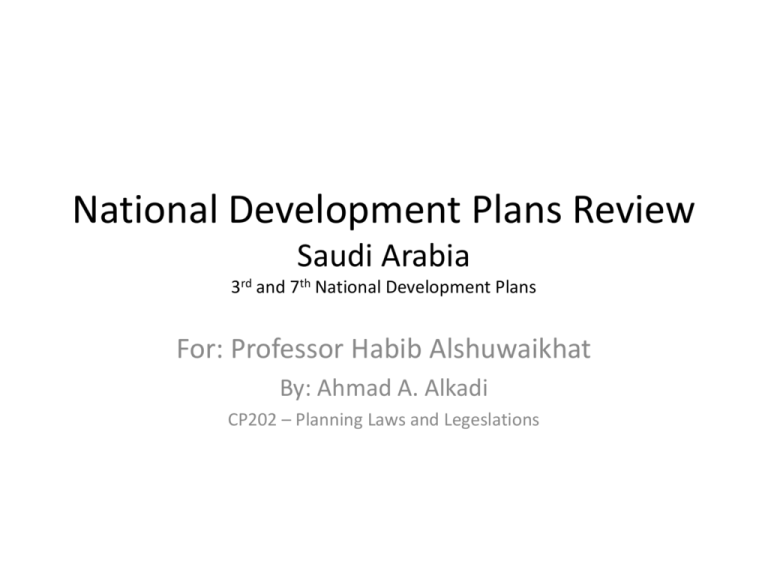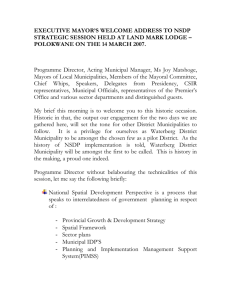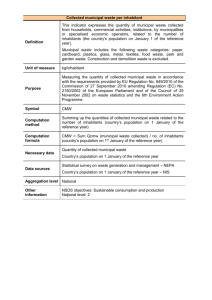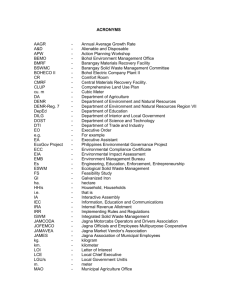National Development Plans Review Saudi Arabia 3rd and 7th
advertisement

National Development Plans Review Saudi Arabia 3rd and 7th National Development Plans For: Professor Habib Alshuwaikhat By: Ahmad A. Alkadi CP202 – Planning Laws and Legeslations The 3rd Development Plan • controlled urban growth in predetermined areas. • To achieve successful urban development, industrial and commercial growth in locations which have capacity to be productive. • Migration to the cities which created and expanding demand for buildings and an increase in construction activity 3rd Plan Policies • Operate and maintain existing and planned municipal systems effectively so that citizens receive services in a timely and economically manner. • Continue the decentralization program by establishing more municipal administrative municipal administrative units. 3rd Plan Policies • Enforcing building code and regulations when promulgated for private buildings in cities, towns and villages. • Assure that cities which have problems due to their topography or other reasons will get the proper storm drainage systems to protect lives and property. 4th Plan Policies • Institute systematic building inspection. • Accelerate the formation of village clusters. • Prepare and regularly update comprehensive plans. • Encourage developments that will utilize existing infrastructure. Problems: • Difficulties in recruiting and training the necessary people, especially outside the major urban areas. • Difficulties in controlling urban growth inside the serviced areas, which has caused a higher per unit cost of infrastructure investment. • Centralization of government and lack of coordination between related governmental agencies. Analysis of the 3rd Development Plan • The policies of third plan are mainly concerned with decentralization of municipal services to achieve urban balance between different parts of the kingdom. • The repetition of the decentralization policies in the fourth plan, in addition to the evaluation of the status quo, we find that there has been a failure in implementing these polices. Analysis of the 3rd Development Plan • No actions should be taken to slow the growth of the main regions. • Decentrlization can be achieved by encouraging and finding variety of services in the rural and middle sized cities such as universities and specialized ho • spitals. Analysis of the 3rd Development Plan • One major problem in achieving decentralization is suggested to be in focusing too much on the detail rather than on ensuring the delivery is driven forward in a systematic way . Analysis of the 3rd Development Plan • find the 3rd development plan has achieved its goal of enforcing building codes and regulations, which is reflected by the 4th development plan policy indicating institution of a systematic building inspection. The 7th Development Plan • Increase on the demand for municipal facilities and services municipal services. • Cities’ Expansion created a wide gap between spatial expansion and the number of inhabitants. 7th Development Plan Policies • Raising the efficiency of municipalities’ information systems and updating them regularly. • Planning for urban development with the participation of municipalities and in coordination with relevant agencies. • Reorganizing the structure of the Ministry and affiliate agencies in order to eliminate duplication of responsibilities in conformity with the provincial system. 7th Development Plan Policies • Availing of all means to ensure regular and continuous revenue streams to enable the municipalities to develop their services and maintain their infrastructure. • Continuing to develop and improve village clusters to ensure availability and accessibility of municipal services in rural areas. 8th Development Plan Policies • Continued restructuring of the sector to enable provision of more efficient, advanced municipal services. • Implementation of the National Spatial Strategy, with due emphasis on the development corridors and growth centers identified by it. 8th Development Plan Policies • Development of municipal revenues to enable municipalities to develop their services and maintain their facilities. • Enhancing the role of municipal councils in all regions. Problems • Lack of enough funds to support the municipal projects to meet up with the spending urban growth. • Internal migration leads to expand the number of rural areas which requires expanding the scope of municipal services in existing municipalities and village clusters. Problems • There are lack of databases and information banks on urban functions and services and regional computerized information systems. • There is lack coordination among all relevant governmental and non-governmental agencies, at all stages from planning to implementation and monitoring. Analysis of the 7th Development Plan • the restructuring of the municipal and rural affairs department, which is represented by the repetition of the same policy in the 8th plan. • lack of coordination between different planning related agencies. Analysis of the 7th Development Plan National Spatial Strategy • Solving the centralization issue. • It is a long term policy statement . • To broad guidelines for spatial development under various policy directions • To provide a spatial level of policies relevant to various sectors of development and different parts of national space. • To ensures the integration of human settlements planning into general socio-economic development planning.







